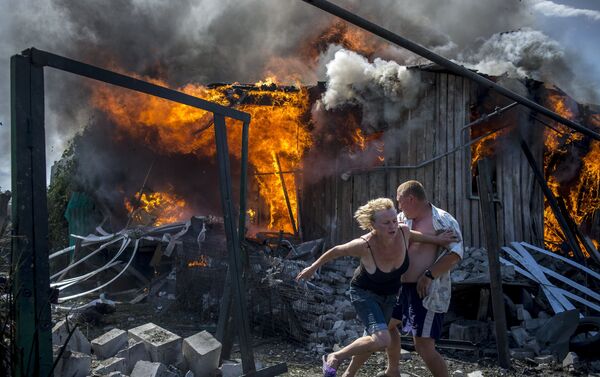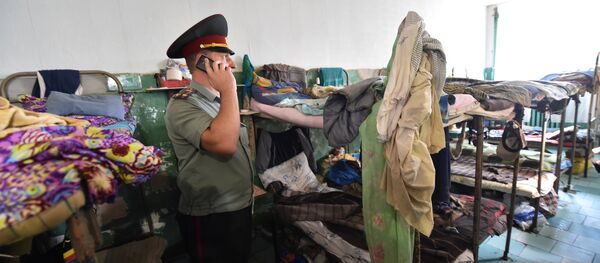KIEV (Sputnik) – Head of the mission Fiona Frazer told reporters in Kiev it recorded a total of 32,071 civilian casualties of the conflict, 9,640 of whom had been killed and 22,431 wounded.
Ukraine’s southeast has been severely affected by Kiev’s special military operation, launched in the southeastern Donetsk and Lugansk regions in April 2014. The operation was a response to local residents' refusal to recognize the new coup-installed government in the country.
Head of the mission Fiona Frazer who presented OHCHR report on Ukraine told reporters in Kiev it recorded a total of 32,071 civilian casualties of the conflict, 9,640 of whom had been killed and 22,431 wounded.
According to the report, the number of the civilian casualties rose by 66 percent percent over the period from mid-May to mid-August, compared to the the previous reporting period.
"While the situation has improved since the ceasefire was restored on 1 September, the situation along the contact line remains deeply unstable, as demonstrated by the incidents which took place last week-end," UN High Commissioner for Human Rights Zeid Ra’ad Al Hussein said.
Kiev launched a special military operation in Ukraine’s southeast in April 2014, after local residents refused to recognize the new Ukrainian authorities, which came to power as a result of a coup.
In February 2015, Kiev forces and eastern Ukraine's militia signed a peace agreement in the Belarusian capital of Minsk. The deal stipulates a full ceasefire, weapons withdrawal from the line of contact in eastern Ukraine, as well as constitutional reforms that would give a special status to the self-proclaimed Donetsk and Lugansk People’s Republics. Despite the agreement, the ceasefire regime is regularly violated, with both sides accusing each other of multiple breaches, undermining the terms of the accord.
On September 1, a new ceasefire regime came into force in the region. The ceasefire agreement was reached between Ukraine’s conflicting sides during a Contact Group meeting in August.





